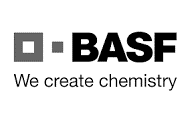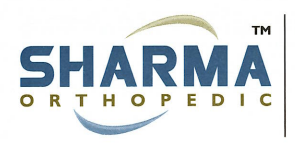- HS Classification Opinions
- 362 Views
CLA-2 OT:RR:CTF:EMAIN HQ H301814 NVF
Customs and Border Protection
Port of Chicago
5600 Pearl Street
Rosemont, IL 60018
Attn: Mr. Osbaldo Cruz, Supervisory Import Specialist
RE: Request for Internal Advice on Tariff Classification of the SoftBank PEPPER Robot
Dear Port Director:
This is in response to a request for internal advice concerning the proper classification of a PEPPER robot (“PEPPER” or “robot”). The request was filed by the law firm of Junker & Nakachi on behalf of SoftBank Robotics America, Inc. (“SoftBank”). In reaching our decision, we have considered information presented in SoftBank’s April 12, 2018 request, supplemental information provided via email, and publicly available information. On June 30, 2020, SoftBank waived their request to hold a conference.
FACTS:
The PEPPER robot is a wheeled, humanoid robot that contains a tablet on its chest. It can move and interacts with people using the tablet and artificial speech. The robot is capable of analyzing voice, facial expressions, and vocabulary to allow it to read human emotions and interact with human beings.
The robot has four major components: an electrical block unit, hip and knee motors, the tablet, and a rechargeable lithium ion battery. The electrical block unit and the tablet both contain an internal computer with RAM and flash memory. Other components include, but are not limited to: additional electronic boards, two autofocus cameras, a 3D camera, loudspeakers, microphones, Android OS, various LEDs, multiple small motors, and laser, infrared, sonar and touch sensors.
PEPPER can store its own programming or access cloud-based software. In its request for internal advice, SoftBank states that it has developed two applications for PEPPER: Promotor and Host. The Promotor application is described as used to engage and attract customers, manage promotional content in real time, and capture customer data, among other functions. The Host application is described as used to greet customers or guests when they walk through the door, let everyone know who has arrived and when, and answer frequently asked questions. However, the robot runs on an open platform and therefore can be customized or further developed according to the user’s needs. Indeed, PEPPER is programmable in several programming languages and users can create new apps and functions to change how the robot performs.
SoftBank estimates that approximately 50% of the units it will deploy in the next 12 months will run either the Promotor or Host application, 25% will be used to develop new applications, and 25% will be used in an academic setting. As an example, SoftBank states that the San Francisco Unified School District and Boston Public School will use PEPPER as a learning tool to support computer science education at the high school level.
ISSUES:
Whether the robot is classified under heading 9023, HTSUS, as apparatus or models designed for demonstrational purposes; heading 8471, HTSUS as an automatic data processing machine; or under heading 8479, HTSUS, as a machine having individual functions not specified elsewhere.
LAW AND ANALYSIS:
Classification of goods under the HTSUS is governed by the General Rules of Interpretation (GRI). GRI 1 provides that classification shall be determined according to the terms of the headings of the tariff schedule and any relative section or chapter notes. In the event that the goods cannot be classified solely on the basis of GRI 1, and if the headings and legal notes do not otherwise require, the remaining GRIs 2 through 6 may then be applied in order.
The HTSUS subheadings under consideration are as follows:
————————————————————–
8471 Automatic data processing machines and units thereof; magnetic or optical readers, machines for transcribing data onto data media in coded form and machines for processing such data, not elsewhere specified or included:
————————————————————–
8479 Machines and mechanical appliances having individual functions, not specified or included elsewhere in this chapter; parts thereof:
————————————————————–
9023 Instruments, apparatus and models, designed for demonstrational purposes (for example, in education or exhibitions), unsuitable for other uses, and parts and accessories thereof:
————————————————————–
SoftBank argues that the robot should be classified as apparatus designed for demonstrational purposes of subheading 9023.00.0000, HTSUS. As support for this position, SoftBank asserts that PEPPER has been sold explicitly for demonstrations and tours. It also argues that PEPPER is similar to the robotic baby in HQ H201596 (May 7, 2016) (RealCare Baby), which we classified under heading 9023, HTSUS.
In the alternative, SoftBank argues that the robot is properly classified under subheading 8471.41.0150, HTSUS, which provides for automatic data processing machines. SoftBank also argues that heading 8479 is precluded from consideration because it is a residual provision intended to encompass articles that do not fall under a more specific heading.[1] Finally, SoftBank asserts that PEPPER is not an article intended for amusement and therefore cannot be classified under heading 9503 as a wheeled toy, or under heading 9505 as other articles of entertainment.[2]
Note 1(m) to Section XVI, which encompasses Chapter 84 states that Section XVI does not cover articles of Chapter 90. Therefore we must first consider whether the subject robot is prima facie classifiable as an article of heading 9023, HTSUS.
The Harmonized Commodity Description and Coding System Explanatory Notes (“ENs”) constitute the official interpretation of the HTSUS. While not legally binding or dispositive, the ENs provide a commentary on the scope of each heading of the HTSUS and are generally indicative of the proper interpretation of these headings at the international level. See T.D. 89-80, 54 Fed. Reg. 35127 (August 23, 1989).
Heading 9023 describes “instruments, apparatus and models” which are “designed for demonstrational purposes” and are “unsuitable for other uses.” EN 90.23 provides in pertinent part:
This heading covers a wide range of instruments, apparatus and models designed for demonstrational purposes (e.g., in schools, lecture rooms, exhibitions) and unsuitable for other uses. Subject to this proviso, the heading includes: 1) Special demonstrational machines or appliances such as the Wimshurst machine (for experiments with electricity), the Atwood machine (for demonstrating the law of gravity), Magdeburg hemispheres (for demonstrating the effects of atmospheric pressure), the Gravesande ring (for demonstrating thermal expansion), Newton’s disc (for demonstrating the colour composition of white light).
2) Models of human or animal anatomies (whether or not articulated or fitted with electric lighting); models of stereometric bodies, of crystals, etc. Models of this kind are usually made of plastics or of compositions based on plaster.
3) Training dummies, constituting an inflatable life-size model of the human body with artificial respiratory parts reproducing those of a human being; used for training in the “kiss-of-life” revival method.
4) Cross-sectional models of ships, locomotives, engines, etc., cut to show their internal operation or the functioning of an important part; panels showing, in relief, for example, the assembly of a radio (for radiotelegraphists’ schools), or the oil circulation in an engine, etc., whether or not fitted with an electric lighting system.
5) Show-cases and exhibit panels, etc., displaying samples of raw materials (textile fibres, woods, etc.), or showing the various stages of manufacture or processing of a product (for instruction in technical schools).
6) Models, etc., for artillery training, used in training courses held indoors.
7) Prepared slides for microscopic study.
8) Models of towns, public monuments, houses, etc. (of plaster, paperboard, wood, etc.).
9) Small scale demonstrational models (of aircraft, ships, machines, etc.) generally of metal or wood (e.g., for advertising purposes, etc.). It should, however, be noted that models suitable solely for ornamental purposes are classified in their respective headings. 10) Relief maps (of provinces, towns, mountain ranges, etc.), relief plans of towns, and terrestrial or celestial globes in relief, whether or not printed.
11) Military tank simulators which are used for the training (including advanced training) of tank drivers… * * * The heading also excludes: * * * c) Articles designed for both recreational and demonstrational purposes (e.g., certain model sets of mechanical parts; mechanical or electrical toy locomotives, boilers, cranes, aircraft, etc.) (Chapter 95).
Heading 9023 and EN 90.23 alike make clear that articles of heading 9023 are those designed for demonstrational purposes to the exclusion of all other uses. The term “demonstrational” is not defined in the HTSUS and must therefore be construed in accordance with its common meaning, which may be ascertained by reference to “standard lexicographic and scientific authorities” and to the pertinent ENs. See GRK Can., Ltd. v. United States, 761 F.3d 1354, 1357 (Fed. Cir. 2014). Dictionary definitions of “demonstrate” and “demonstration” previously cited by CBP for this purpose indicate that, in the context of “education” or “exhibits”, “demonstrational” denotes an inherent capacity to illustrate certain concepts, functions, processes, etc. See, e.g., Headquarters Ruling Letter (HQ) H266154 (Feb. 23, 2016) (Airbus A321 Door Trainer), and HQ H042579 (Oct. 27, 2010) (both citing Oxford English Dictionary definition of “demonstrate”, as well as American College Dictionary definition of “demonstration”, to define “demonstrational” as “used to explain the use or operation of [a] good”); see also HQ H050116 (Mar. 26, 2009) (determining that a humanoid robot designed to explain and demonstrate the facts and science on robots was sufficiently “demonstrational”, given the dictionary definition of “demonstrate,” because the robot “is pointing out information about robotics generally”).
This understanding of the term is supported by EN 90.23, insofar as the exemplars of items “designed for demonstrational purposes” set forth in the EN all share, as a unifying characteristic, the capacity to convey conceptual or practical knowledge. See LeMans Corp. v. United States, 660 F.3d 1311, 1320-21 (Fed. Cir. 2011) (holding that the use of EN exemplars to define the scope of a tariff term is permissible). Specifically, the exemplars include small-scale models that illustrate the anatomical construction and/or mechanics of their full-scale counterparts (e.g., of human or animal bodies, vehicles, structures), interactive simulators and dummies whose use hones certain operational skills (e.g., life-saving techniques, military vehicular navigation), and dynamic objects that provide visual representations of certain technical concepts (e.g., laws of gravity, effects of atmospheric pressure). Articles that do not share this pedagogical characteristic, or otherwise fall within the definitional scope of “demonstrational”, must be classified outside heading 9023, HTSUS. See HQ H042579, supra (ruling that a “camera display model” was excluded from heading 9023 because the article “does not contain any internal electronics, which severely limits the demonstrational abilities of the display model” and because “[a] salesperson cannot use the display model to explain the use or operation of the digital camera to a consumer”).
In this case, PEPPER is not designed solely for demonstrational purposes and is suitable for other uses. While it can be used at a trade show and could convey pertinent information to passers-by, the robot is not limited solely for demonstrational purpose due to its broad range of abilities and highly customizable programming. Indeed, SoftBank states that the robot is shipped with a Host mode program, which enables it to be used in any commercial setting to greet customers/patients/visitors. By contrast, the list of exemplars in the ENs consists of items which can only be used for demonstrational purposes and do not have alternate functions. Finally, the functions that PEPPER performs do not appear to be limited to those contemplated in SoftBank’s request. For example, in one online video, PEPPER has been programmed to assist the end user with comparing different coffee makers available on the online retail market for eventual purchase.[3] This example, the Host mode that PEPPER can be used in, and its highly programmable nature do not limit it to demonstrational and pedagogical purposes and therefore the robot cannot be classified under heading 9023, HTSUS.
Having eliminated heading 9023, HTSUS from consideration, we turn to the headings in Chapter 84.
Heading 8471 provides in pertinent part for automatic data processing machines. Note 5(A) to Chapter 84 defines automatic data processing machines as machines that are capable of:
i) Storing the processing program or programs and at least the data immediately necessary for the execution of the program; ii) Being freely programmed in accordance with the requirements of the user; iii) Performing arithmetical computations specified by the user; and iv) Executing, without human intervention, a processing program which requires them to modify their execution, by logical decision during the processing run.
Note 5(E) to Chapter 84 states that, “Machines incorporating or working in conjunction with an automatic data processing machine and performing a specific function other than data processing are to be classified in the headings appropriate to their respective functions or, failing that, in residual headings.”
There is insufficient information on the record to determine whether the PEPPER robot performs the type of data processing that would render it an automatic data processing machine of heading 8471. The robot runs on proprietary software, perhaps in addition to its components that run Android OS, but we are unable to determine whether this proprietary software performs the type of data processing functions contemplated by Note 5(A) to Chapter 84, supra. Leaving aside the issue of whether the requirements of Note 5(A) to Chapter 84 are met, Note 5(E) to Chapter 84 specifically excludes machines that perform a specific function other than data processing. The information on the record supports a finding that the PEPPER robot performs specific functions other than data processing. As a robot, it is designed to interact with human beings via voice and movement. Its various cameras, speakers, microphones, lights, motors, and sensors work in sync to create an anthropomorphic robot which mimics human speech and expressions and is able to communicate verbally with human beings. Therefore Note 5(E) to Chapter 84 clarifies that subject robot falls outside the scope of heading 8471, HTSUS.
Heading 8479, HTSUS, provides for machines and mechanical appliances having individual functions, not specified or included elsewhere in Chapter 84. EN 84.79 provides in pertinent part:
This heading is restricted to machinery having individual functions, which: (a) Is not excluded from this Chapter by the operation of any Section or Chapter Note, and (b) Is not covered more specifically by a heading in any other Chapter of the Nomenclature, and (c) Cannot be classified in any other particular heading of this Chapter since: (i) No other heading covers it by reference to its method of functioning, description or type, and (ii) No other heading covers it by reference to its use or to the industry in which it is employed, or (iii) It could fall equally well into two (or more) other such headings (general purpose machines). The machinery of this heading is distinguished from the parts of machinery, etc., that fall to be classified in accordance with the general provisions concerning parts, by the fact that it has individual functions.
For this purpose the following are to be regarded as having “individual functions”: (A) Mechanical devices, with or without motors or other driving force, whose function can be performed distinctly from and independently of any other machine or appliance.
In light of the foregoing, we therefore conclude that the PEPPER robot is classified under heading 8479, HTSUS, as a machine or mechanical appliance with the individual function of mimicking human speech and expressions as prompted.
HOLDING:
By application of GRIs 1 and 6, the PEPPER robot is classified under subheading 8479.89.94, HTSUS which provides for “Machines and mechanical appliances having individual functions, not specified or included elsewhere in this chapter; parts thereof: Other machines and mechanical applicances: Other: Other.” The column one, general rate of duty is 2.8% ad valorem.
Effective July 6, 2018, the Office of the United States Trade Representative (USTR) imposed an additional tariff on certain products of China classified in the subheadings enumerated in Section XXII, Chapter 99, Subchapter III U.S. Note 20(b), HTSUS. The USTR imposed additional tariffs, effective August 23, 2018, on products classified under the subheadings enumerated in Section XXII, Chapter 99, Subchapter III U.S. Note 20(d), HTSUS. Subsequently, the USTR imposed further tariffs, effective September 24, 2018, on products classified under the subheadings enumerated in Section XXII, Chapter 99, Subchapter III U.S. Note 20(f) and U.S. Note 20(g), HTSUS. For additional information, please see the relevant Federal Register notices dated June 20, 2018 (83 Fed. Reg. 28710), August 16, 2018 (83 Fed. Reg. 40823), and September 21, 2018 (83 Fed. Reg. 47974). Products of China that are provided for in subheading 9903.88.01, 9903.88.02, 9903.88.03, or 9903.88.04 and classified in one of the subheadings enumerated in U.S. Note 20(b), U.S. Note 20(d), U.S. Note 20(f) or U.S. Note 20(g) to subchapter III shall continue to be subject to antidumping, countervailing, or other duties, fees and charges that apply to such products, as well as to those imposed by the aforementioned Chapter 99 subheadings.
Products of China classified under subheading 8479.89.94, HTSUS, unless specifically excluded, are subject to the additional 25 percent ad valorem rate of duty. At the time of importation, the importer must report the Chapter 99 subheading, i.e., 9903.88.42, in addition to subheading 8479.89.94, HTSUS, listed above.
Duty rates are provided for convenience and are subject to change. The text of the most recent HTSUS and the accompanying duty rates are provided on the internet at www.usitc.gov/tata/hts/.
Sixty days from the date of this decision, the Office of Trade, Regulations and Rulings, will make this decision available for CBP personnel, and to the public on the CBP Home Page at http://www.cbp.gov by means of the Freedom of Information Act, and other methods of publication.
Sincerely,
Craig T. Clark, Director
Commercial and Trade Facilitation Division
———————–
[1] SoftBank also invokes heading 8543, HTSUS, which provides for electrical machines and apparatus, having individual functions, not specified elsewhere. However, heading 8543 does not apply here because it only covers ar&()*6C( L ‘
?…-?–& ) ^ !!!>>?~~~>mma>P>> hV…hV…6?B*CJaJphhV…hV…6?CJticles in which any mechanical function, if present, is subsidiary to the electrical function. See Harmonized Commodity Description and Coding System Explanatory Notes 8479 and 8543.
[2] We agree with SoftBank’s assertion that the subject robot is not an article intended for amusement and therefore cannot be classified as a wheeled toy under heading 9503, HTSUS or as other entertainment articles of heading 9505, HTSUS.
[3] https://www.youtube.com/watch?v=tyFPwOjSWII
Janron Consult, Tax Consultant Kenya, Customs Tax Consultant Kenya, Tax Advisory Kenya








